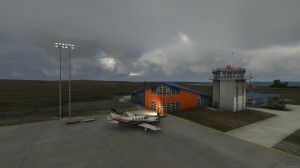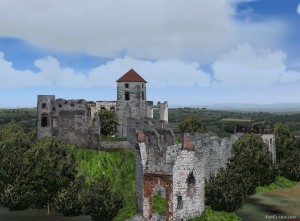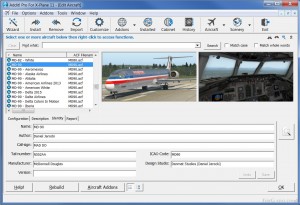Scenery
Ghost Airports Collection Pennsylvania. The Ghost Airport Collection is a collection of forty-seven Pennsylvania airports for FSX that used to exist but now are gone or virtually gone. These airports are now malls or shopping centers, industrial complexes, housing developments, parks, schools universities, farm land, etc, etc. In some cases the airport is still recognizable but unused or partially used for another purpose. All the airports in this collection fit that criteria. Many airports that comprise this collection came from a March 1940 Cleveland sectional chart I inherited from my father. There are airports that existed in 1940 and still exist as an airport in one form or another today. Those airports still in existence are not ghost airports. Signs of their existence are still ther
Show more... e today like at the former location of Bettis airport near Pittsburgh (now the Southland Shopping Center) that has a nearby street named, Luscombe Lane. I bet that many residents of that street who lack an aviation background do not realize the significance of that name. In one case an airport became a housing development and the runway became the main road in the development. To preserve the heritage of the land, they named the main road, Runway Avenue. Oil Citys Splane Memorial Airport still exists in whole but is used as the citys composting facility. These airports have been built in FSX using aerial photographs from Penn Pilot (www. pennpilot. psu. edu) and with great deal of aid from Google Earth. A web site called Abandoned & Little-Known Airfields was also exceptionally helpful. You will need to use a little imagination when visiting these airports because I used only stock buildings that come with Airport Design Editor library. These airports were built using Airport Design Editor v1. 47. 7. In the era of the airports represented here, the average runway was a two thousand foot grass strip. Even the paved fields average length was around two thousand feet. Some of these airports were built by the government for use by the air mail pilots. In most cases they obtained the use of some farm field pasture land and kept it somewhat mowed (not over knee-high). They used the flying field concept where pilots landed whatever way they had enough length and was mostly into the wind. Designate an official runway?-Naw! The runways were often laid out over mildly rolling hills. Rolling hills is a function where Flight Simulator has a bit of a handicap. You can leave the natural (digitized) lay of the land in place but it tends to be pointy and uneven making for some bumpy landings. Where the polygons intersect, the transition is not always smooth and a wheel or the landing gear may disappear into the ground. As a result, in most cases, I have opted to flatten the terrain. This results in both positive and negative embankments at the edge of the airport. While these cases do not represent 100% the actual airport appearance, they work better than the un-flattened version. In the updated versions included in Update 6, several of the airports are now un-flattened. I have developed a method that allows the airports to follow the surrounding terrain. I used this method at airport that generated large embankments. There were airports where they must have built up cut down the exiting terrain because using the natural terrain would result in exceedingly steep slopes on the runways. At a couple of airports, when the aircraft reach certain spots on the runway, they would be totally below the runway surface. I had to leave airports like that flattened. There is at least one airport that is missing one of the runway starts. This was caused from the runway start being set (automatically) at airport elevation, ten feet below the surrounding terrain. FSX tries to resolve the difference between the start point and the terrain and creates an area of tall grass where the landing gear disappears and the aircraft seems to sink in to the grass up to the bottom of the doors. I have tried to find the original identifiers for these airports. I have only found Oil Citys identifier (KOIL) and Scranton Municipals (KSCR) so far. I contacted the office of Penndot that licenses airports but they said they archive records that old in a warehouse making them virtually unavailable. They are not even sure they used identifiers for all airports of that era. Flight Simulator requires an identifier for each airport so I just made up identifiers for most of these airports. Those identifiers I made up are, in reality, identifiers for heliports that are not used in FSX. If anybody has information on what the real identifiers for any of the ghost airports were, please let me know.. .
Show less...







